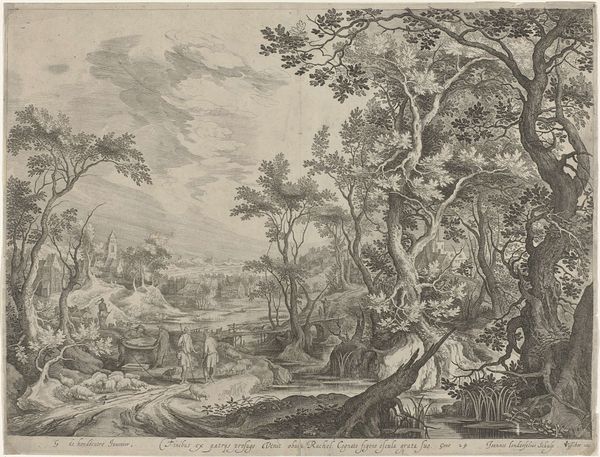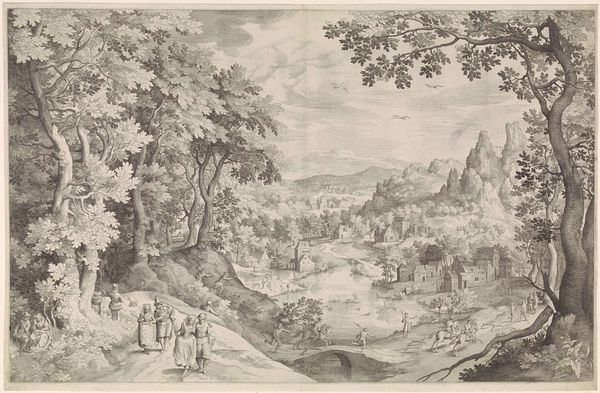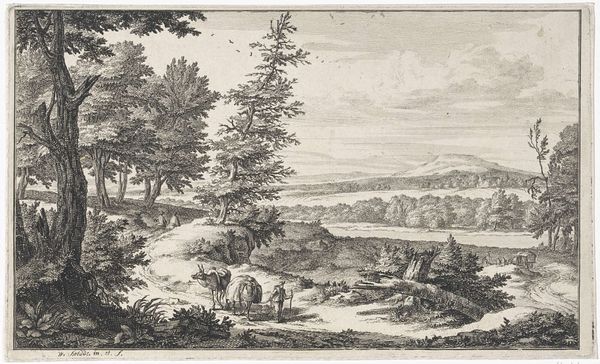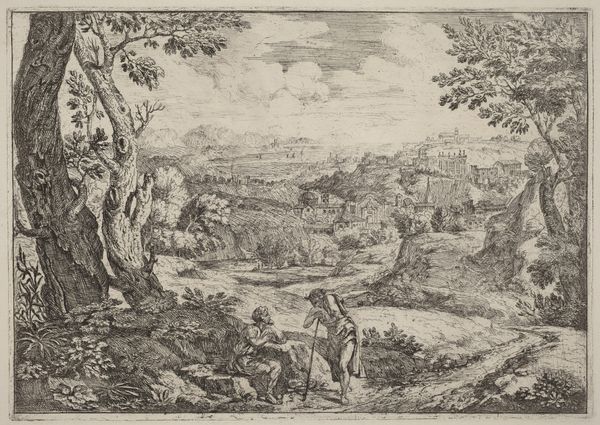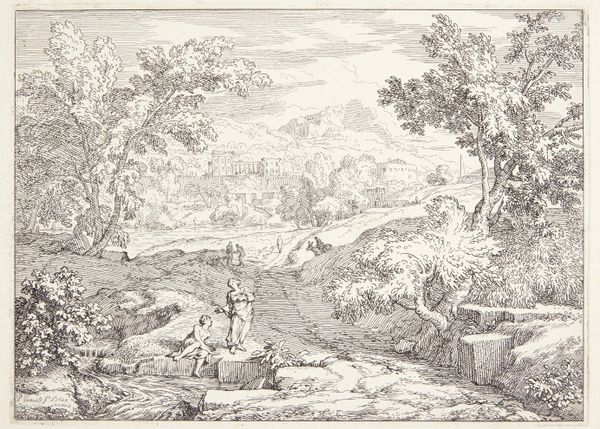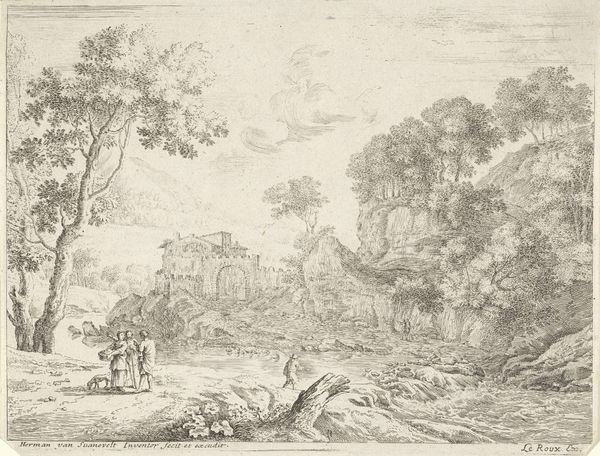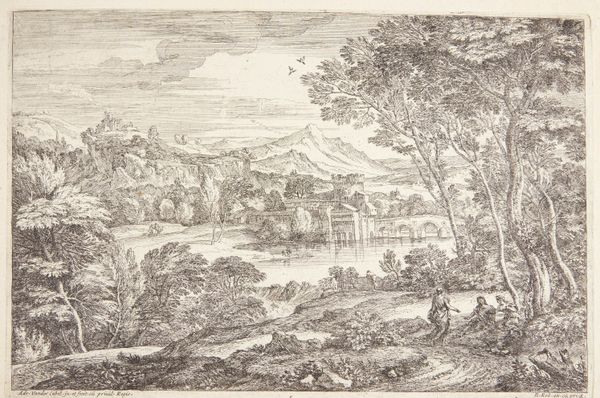
drawing, ink, engraving
#
drawing
#
baroque
#
pen drawing
#
landscape
#
figuration
#
ink
#
history-painting
#
engraving
Dimensions: width 658 mm, height 404 mm
Copyright: Rijks Museum: Open Domain
Nicolaes de Bruyn created 'Oordeel van Paris' using etching, a printmaking technique involving acid to cut into a metal plate. The fine lines, built up in layers to create tone and shadow, speak to the labor-intensive processes involved. The image shows a classical scene set within a detailed landscape. Consider how the density of line communicates depth, differentiating between the heavily wooded foreground, the open middle ground, and the distant, atmospheric mountains. The original would have been printed from a metal plate, inked, and run through a press, leaving a slight relief on the paper surface. Etchings like this one were relatively affordable. Through the printmaking process, Bruyn’s designs could be reproduced and disseminated widely. In this way, the artist could profit from his labour and engage with a broader audience. Appreciating the materiality of this etching allows us to reflect on issues of labor, artistic production, and consumption in the early modern period, reminding us that art is always connected to its social context.
Comments
No comments
Be the first to comment and join the conversation on the ultimate creative platform.
